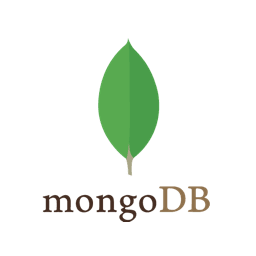

👉 Initial release: February 11, 2009 👉 Stable release: 6.0.7 Version, 28 June 2023
👉 Written in: C++, JavaScript, Python 👉 Type: Document-oriented database
Our MongoDB tutorial is designed and developed in such a way that it helps every level of MongoDB learners, whether they are beginners or experienced. We provide the basics and advanced concepts of MongoDB, as well as preparation for interviews.
Before starting, let's briefly know about MongoDB.
MongoDB is a popular open-source NoSQL (non-relational) database management system. It is designed to store, manage, and retrieve large volumes of data in a flexible and scalable manner. MongoDB diverges from traditional relational databases by using a document-oriented data model instead of tables and rows.

A database is a collection of structured data or information that is electronically stored and organized in a software system. A database is controlled by a database management system (DBMS).
There are several types of databases, each designed to serve specific purposes and accommodate different data management needs.
SQL stands for Structured Query Language. It is a standard programming language used for managing relational databases.
NoSQL, which stands for "not only SQL," is a term used to describe a category of databases that are designed to store and retrieve data in a non-relational manner.
SQL (Structured Query Language) and NoSQL (Not only SQL) are two different types of database management systems, each designed to handle different data models and query languages.
MongoDB is a popular open-source NoSQL (non-relational) database management system. It is designed to store, manage, and retrieve large volumes of data in a flexible and scalable manner. MongoDB diverges from traditional relational databases by using a document-oriented data model instead of tables and rows.
MongoDB is a popular NoSQL database that offers several features that make it a powerful choice for modern application development.
MongoDB and MySQL are both popular database management systems, but they differ significantly in their architecture, data models, query language, and usage scenarios.
To create a database in MongoDB, we can use the use command followed by the name of the database we want to create.
The use command is also used to switch to a specific database, and if the database does not exist, MongoDB will create it when we start adding data.
To drop a MongoDB database, we can use the dropDatabase() method. Please exercise caution when using the dropDatabase() command, as it permanently deletes the entire database and its data.
In MongoDB, a collection is a group of documents stored in the database. It is the equivalent of a table in a relational database. Collections in MongoDB do not enforce a specific schema, which means that documents within a collection can have different structures.
In MongoDB, we can rename an existing collection using renameCollection() method.
To drop a collection in MongoDB, we can use the drop() method.
In MongoDB, we can create or insert one or more documents into the collection using the following methods: db.collection.insertOne(), db.collection.insertMany(), db.collection.insert()
In MongoDB, we can retrieve or query one or more documents from the collection using the following methods:
db.collection.find(), db.collection.findOne()
In MongoDB, we can update or modify one or more existing documents in a collection using the following methods:
db.collection.updateOne(), db.collection.updateMany().
In MongoDB, we can delete or remove one or more documents from the collection using the following methods: db.collection.deleteOne(), db.collection.deleteMany()
Indexes are data structures that can store collection’s data set in a form that is easy to traverse. Queries are efficiently executed with the help of indexes in MongoDB.
Replication is the process of making copies of data on various servers and keeping track of them. With multiple copies of the same data on different database systems, replication gives us redundancy and makes data more accessible.
It may be possible that our important and valuable data can be removed, crashed, or corrupted from our server or our local machine accidentally or by any mistake.
A list of MongoDB important interview questions and answers for beginners and experienced.